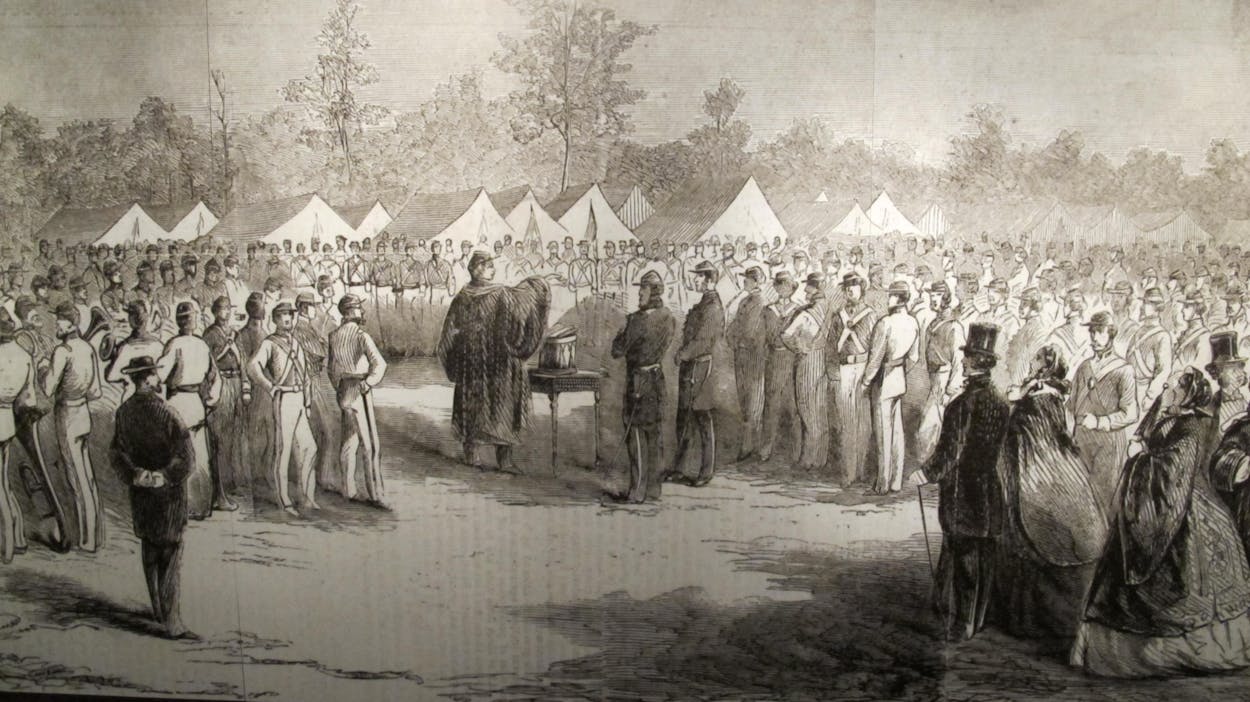The city of Georgetown decided to kick off the new year by organizing a ball for January 30 at the Williamson County Courthouse. The theme and name of the ball? “Old South Ball: A Civil War Soiree.” The “soiree,” listed as the Civil War Ball on the Williamson Museum’s event calendar, invites people to attend in period attire and “enjoy the music of the 1860s” for just $25 per person and $40 per couple. According to a report by the Austin American-Statesman, Georgetown City Council helped promote the ball with a grant of $1,500.
There are several things wrong with this, and I’m not the only one who thinks so. A group called Positive Change for Georgetown has gathered more than a hundred signatures on an online petition asking the Williamson Museum to reconsider the ball’s theme. According to the petition, honoring the Civil War, “one of the darkest times in American history,” with a ball is chock full of white privilege.
Although the phrase “privilege” is often confused to mean that something extra or beneficial is given to a certain group of people (and, yes, that can sometimes be the case), it usually means that certain people enjoy the benefits of not dealing with difficulties or obstacles that other groups encounter. In this case, white privilege comes into play because white residents aren’t living in a city in which their local government celebrates an era when people who looked like you were enslaved with a ball. Maybe the organizers had good intentions, but these intentions didn’t give enough thought to the variety of residents in the city and county. Why would black residents want to attend a party with a Civil War theme? Why would anybody?
As Lou Snead, a retired minister, told the Statesman, the ball “ feels like it’s a party for white folks, although they probably didn’t intend it to be that.”
I’m assuming Mickie Ross, an executive director of the Williamson Museum, most likely doesn’t agree with that statement, since she’s somehow surprised that there’s opposition to the event. Ross told the Statesman that the ball is a “very simple dance” in conjunction with the Civil War exhibit currently in the Williamson Museum. “We are not promoting slavery. We’re not even promoting war,” she said.
Even if it isn’t directly promoting slavery or war, a ball certainly doesn’t accurately convey the seriousness and gravity of either. The Civil War was a grim period in history, and you don’t need live music and cocktails to “tell the story of the people who lived during the Civil War.” You can do that with something like, oh I don’t know, a museum exhibit. But you step away from the informative and into the celebratory when you organize something with alcohol and costumes and decide to call it a soirée. To plan such an event around a real war is a remarkably flippant thing to do. To have a Civil War ball sponsored in a city in Texas—which already has a problem with denying the role of slavery in the U.S.—shows a real disregard for its black residents.
This isn’t much of a surprise from a museum that describes the motives of the Civil War only as “still debated” in the online description for their exhibit. Tommy Gonzalez, a City Council member who supported the ball and also donated artifacts to the museum’s exhibit, told the Statesman that the Civil War Ball is “an old Southern custom” and inaccurately compared it to quinceañeras and debutante balls. Last I checked, those dances weren’t about wars caused by states fighting to own slaves.
Southerners, including Texans, still have a problem with acknowledging how rooted “Southern” customs, legacy, and pride are in the enslavement of black people. Let’s not forget that Northern and Southern states were also divided into “non-slave-holding states” and “slave-holding states.” Those who want to argue that the Civil War was caused by Southern states fighting for states rights mustn’t fail to mention that the right in question was the right to own slaves. To try to reduce the significance of slavery in the Civil War is nothing short of ahistorical. Especially in Texas, a state that “mentioned slavery 21 times” in its declaration of secession in 1861, as the Houston Chronicle points out.
Even without downplaying the role of slavery in the war, a Civil War ball in Williamson County makes even less sense given its unique role during the era. As the petition explains:
We are a County and City that did not actually support the inclusion of Texas into the Confederate Union. To quote the Texas State Historical Society: Unionist sentiment was strong in the county, and a resolution denouncing secession was adopted by a Texas Constitutional Union party meeting in Round Rock in 1860. One of the county’s delegates to the secession convention, Thomas Proctor Hughes, was among the eight who voted against the ordinance of secession. When the ordinance was referred to a statewide election, Williamson County was one of nineteen counties to oppose it, rejecting secession by 480 votes to 349.
The museum’s Civil War exhibit is titled “Courage & Contradiction,” and the description—though slightly flawed as I mentioned earlier—notes that the county was “a place with Union sympathies in the midst of the Confederacy.” How does this narrative of a county trapped on the wrong side of the Civil War call for what the petition describes as a “slaver’s plantation ball”? It doesn’t.
There are many considerate, informative ways to learn more about the lives of people in Williamson County during the Civil War without marginalizing a portion of the county’s residents and misconstruing history. The Old South Ball isn’t one of them.








